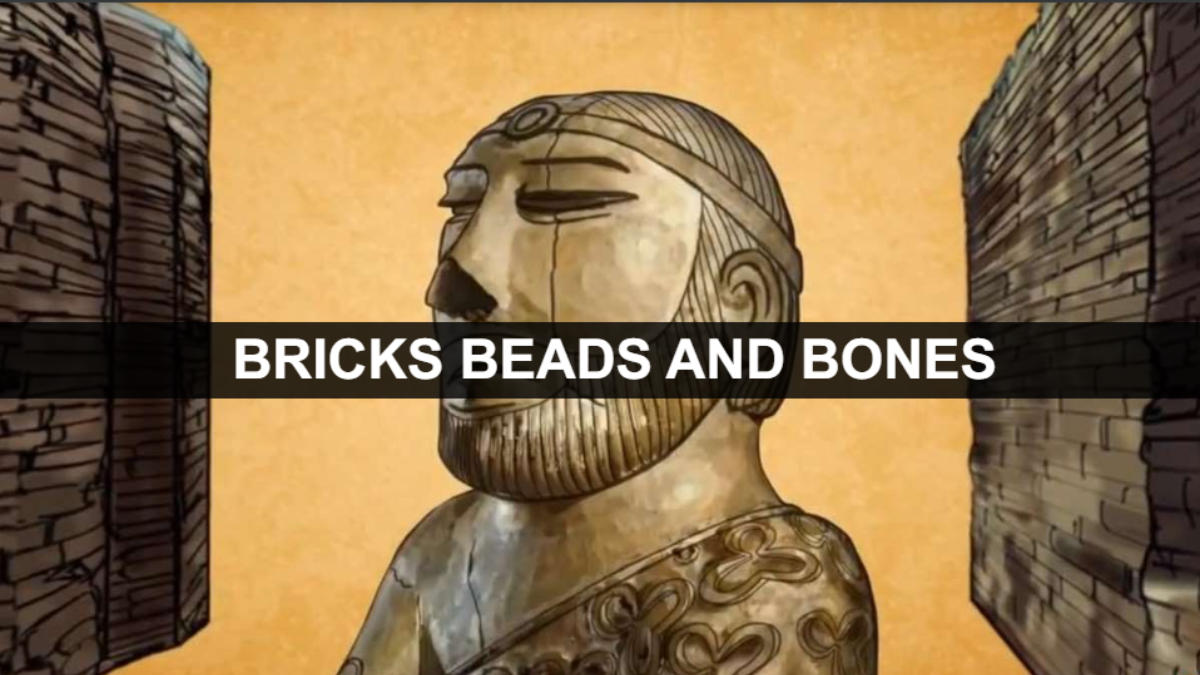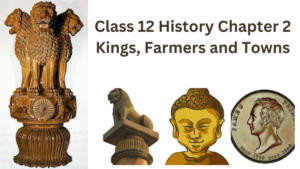The very first chapter of the class 12 history is Bricks, Beads and Bones The Harappan Civilisation. The first chapter of the NCERT Book Class 12 History delves into the history of India’s earliest civilization, the Harappan Civilisation. It educates about the Harappans’ culture, dietary patterns, farming skills, and so on. After completing the chapter, you may be looking for the Class 12 History Chapter 1 Bricks, Beads and Bones The Harappan Civilisation Notes for preparing your questions and answers. Our Adda247 experts have provided you with the complete notes of the Class 12 History Chapter 1 with the Oneshot video on this page,
Class 12 History Notes Chapter 1 Bricks, Beads and Bones The Harappan Civilisation Notes
These Bricks, Breads, and Bones class 12 History notes are created by a group of experienced educators. These Notes PDF contains each topic included in a chapter with only essential details either not too much or too short. After reading the chapter from the book, these notes allow you to revise the entire chapter 1 in minutes. However, the PDF is prepared with points that will be easy to remember and include images of the related topic.
Class 12 History Notes Chapter 1 Bricks, Bread, and Bones PDF
CBSE class 12th revision notes for chapter 1 Bricks, breads, and bones are available in PDF format for free download. Download and keep it handy as review notes for Bricks, Bread, and Bones Class 12 Notes to achieve excellent exam scores.
Download CBSE class 12th Revision notes For chapter 1 PDF
Class 12 History Chapter 1 Bricks, Beads and Bones
If you have any doubts regarding this page, we must refer you to watch this video once. you may save it in your YT playlist for revision in the coming days.
CBSE Class 12 History Notes Chapter 1 Bricks, Beads and Bones The Harappan Civilisation
Beginnings
• There were several archaeological cultures in the region prior to the Mature Harappan.
• These cultures were associated with distinctive pottery, evidence of agriculture and pastoralism, and some crafts.
• Settlements were generally small, and there were virtually no large buildings.
Subsistence Strategies
• The Harappans ate wide range of plants and animal products.
• Animal bones found at Harappan sites include those of cattle, sheep, goat, buffalo and pig.
• The bones of wild species found suggest the Harappans hunted these animals themselves or obtained meat from other hunting communities. Bones of fish and fowl are also found.
Subsistence Strategies:
Agricultural technologies
• Representations on seals and terracotta sculpture indicate that the bull was known, and archaeologists
extrapolate from this that oxen were used for ploughing.
• Terracotta models of the plough have been found at sites in Cholistan and at Banawali. Evidence of a
ploughed field at Kalibangan has also been found.
MOHENJODARO: A planned urban Centre
• lower. Archaeologists designate these as the Citadel and the Lower Town respectively
• lower. Archaeologists designate these as the Citadel and the Lower Town respectively
• The Lower Town was also walled. Several buildings were built on platforms
• Bricks were of standardised ratio, where the length and breadth were four times and twice the height
respectively
Laying out drains
• One of the most distinctive features of Harappan cities was the carefully planned drainage system.
• roads and streets were laid out along an approximate “grid” pattern, intersecting at right angles.
The Citadel
• It is on the Citadel that we find evidence of structures that were probably used for special public purposes.
• The Great Bath was a large rectangular tank in a courtyard surrounded by a corridor on all four sides.
• There were rooms on three sides, in one of which was a large well.
• Water from the tank flowed into a huge drain.
Domestic architecture
• The Lower Town at Mohenjodaro provides examples of residential buildings.
• Many were centred on a courtyard, with rooms on all sides
• there are no windows in the walls along the ground level.
• Some houses have remains of staircases to reach a second storey or the roof.
Tracking Social Differences
Looking for “luxuries”:
The artefacts are classified as utilitarian and luxuries by the archaeologists. Utilitarian objects are of daily use made fairly easily out of ordinary materials such as stone or clay. Luxuries are those items if they are rare or made from costly, non-local materials or with complicated technologies.
Burials
At burials in Harappan site,s the dead were generally laid in pits. Sometimes, there were differences in the way the burial pit was made. Some graves contain pottery and ornaments, perhaps indicating a belief that these could be used in the afterlife. Jewellery has been found in burials of both men and
women.
Finding Out About Craft Production
• Chanhudaro is a tiny settlement exclusively devoted to craft production, including bead-making, shellcutting, metal-working, seal-making and weight-making.
• The variety of materials used to make beads is remarkable.
• Techniques for making beads differed according to the material.
• Nodules were chipped into rough shapes, and then finely flaked into the final form.
• Specialised drills have been found at Chanhudaro, Lothal and more recently at Dholavira.
Identifying centres of production
• Archaeologists identified centres of production by looking for raw materials and tools used.
• Waste is one of the best indicators of craft work. Sometimes, larger waste pieces were used up to make smaller objects.
• These traces suggest that apart from small, specialised centres, craft production was also undertaken in large cities such as Mohenjodaro and Harappa.
Strategies For Procuring Material
Materials from the subcontinent and beyond
• The Harappans procured materials for craft production in various ways.
• Terracotta toy models of bullock carts suggest that this was one important means of transporting goods and people across land routes.
• Another strategy for procuring raw materials may have been to send expeditions, which established communication with local communities.
Contact with distant lands
• Archaeological finds suggest that copper was also probably brought from Oman, on the southeastern
tip of the Arabian peninsula.
• Mesopotamian texts datable to the third millennium BCE refer to copper coming from a region called Magan, perhaps a name for Oman.
• Other archaeological finds include Harappan seals, weights, dice and beads which suggests contacts
with regions named Dilmun (probably the island of Bahrain), Magan and Meluhha, possibly the Harappan region.
Seals, Script, Weights
Seals and sealings
- Seals and sealings were used to facilitate long distance communication.
- The sealing also conveyed the identity of the sender
An enigmatic script
- Harappan seals usually have a line of writing, probably containing the name and title of the owner.
Scholars have also suggested that the motif (generally an animal) conveyed a meaning to those who could not read. - Most inscriptions are short, the longest containing about 26 signs. Although the script remains
undeciphered to date, it was evidently not alphabetical as it has just too many signs – somewhere
between 375 and 400. The script was written from right to left.
The End Of The Civilizations
- There is evidence that by c. 1800 BCE most of the Mature Harappan sites in regions such as Cholistan had been abandoned. Simultaneously, there was an expansion of population into new settlements in Gujarat, Haryana and western Uttar Pradesh.
- Several explanation for the decline of Harappan civilisation are climatic changes, deforestation, excessive floods, the shifting and/or drying up of rivers.
Ancient Authority
- There are indications of complex decisions being taken and implemented in Harappan society.
Palaces and kings - A large building found at Mohenjodaro was labelled as a palace by archaeologists but no spectacular finds were associated with it. A stone statue was labelled and continues to be known as the “priest-king”.
- Some archaeologists are of the opinion that Harappan society had no rulers, whereas other archaeologist feels that there was no single ruler but several rulers, Mohenjodaro had a separate ruler, Harappa another. While some believe that there was a single state.
Discovering The Harappan Civilisation
When Harappan cities fell into ruin, people gradually forgot all about them.
Cunningham’s confusion
The first Director-General of the ASI, Cunningham used the accounts left by Chinese Buddhist pilgrims who had visited the subcontinent between the fourth and seventh centuries CE to locate early settlements. A site like Harappa, which was not part of the itinerary of the Chinese pilgrims and
was not known as an Early Historic city.
A new old civilisation:
- In 1924, John Marshall, Director-General of the ASI, announced the discovery of a new civilisation in the Indus valley to the world.
- It was then that the world knew not only of a new civilisation, but also of one contemporaneous with Mesopotamia.
- Marshall tended to excavate along regular horizontal units, measured uniformly throughout the mound, ignoring the stratigraphy of the site. This meant that all the artefacts recovered from the same unit were grouped together.
New techniques and questions:
- Since the 1980s, there has also been growing international interest in Harappan archaeology.
- Specialists from the subcontinent and abroad have been jointly working at both Harappa and
Mohenjodaro. - They are using modern scientific techniques including surface exploration to recover traces of clay,
stone, metal and plant and animal remains as well as to minutely analyse every scrap of available
evidence. These explorations promise to yield interesting results in the future.
Problems Of Piecing Together The Past
- It is not the Harappan script that helps in understanding the ancient civilisation. Rather, it is material evidence that allows archaeologists to better reconstruct Harappan life. This material could be pottery, tools, ornaments, household objects, etc.
- Organic materials such as cloth, leather, wood and reeds generally decompose, especially in tropical regions. What survive are stone, burnt clay (or terracotta), metal, etc.
Classifying finds
- One simple principle of classification is in terms of material, such as stone, clay, metal, bone, ivory,
etc. The second, is in terms of function. Archaeologists have to decide whether, for instance, an
artefact is a tool or an ornament, or both, or something meant for ritual use. - Sometimes, archaeologists have to take recourse to indirect evidence. For instance, though there are traces of cotton at some Harappan sites, to find out about clothing we have to depend on indirect evidence including depictions in sculpture.
Problems of interpretation
- Early archaeologists thought that certain objects which seemed unusual or unfamiliar may have had a religious significance.
- Attempts have also been made to reconstruct religious beliefs and practices by examining seals, some of which seem to depict ritual scenes.
- Others, with plant motifs, are thought to indicate nature worship.
- Several reconstructions remain speculative at present.










 Class 12 History Chapter 2 Kings, Farmer...
Class 12 History Chapter 2 Kings, Farmer...



